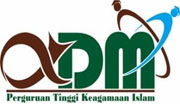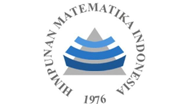Evaluation of Best-Fit Probability Distribution Models for Monthly Rainfall in the Lake Toba Region
Abstract
Keywords
Full Text:
PDFReferences
Z. Kundzewicz et al., “Freshwater Resources and their Management,” 2007, pp. 173–210.
J. Shortridge, “Observed trends in daily rainfall variability result in more severe climate change impacts to agriculture,” Clim. Change, vol. 157, no. 3, pp. 429–444, 2019, doi: 10.1007/s10584-019-02555-x.
W. Zhang, J. Yang, L. Yang, and D. Niyogi, “Impacts of City Shape on Rainfall in Inland and Coastal Environments,” Earth’s Futur., vol. 10, no. 5, p. e2022EF002654, 2022, doi: https://doi.org/10.1029/2022EF002654.
M. Jehanzaib, M. Ajmal, M. Achite, and T.-W. Kim, “Comprehensive Review: Advancements in Rainfall-Runoff Modelling for Flood Mitigation,” Climate, vol. 10, no. 10, 2022, doi: 10.3390/cli10100147.
Z. ŞEN and A. L. I. G. ELJADID, “Rainfall distribution function for Libya and rainfall prediction,” Hydrol. Sci. J., vol. 44, no. 5, pp. 665–680, 1999, doi: 10.1080/02626669909492266.
F. Yusof, Z. Mohd Daud, V.-T.-V. Nguyen, S. S. Syed Jamaludin, and Z. Yusop, “Fitting the best-fit distribution for the hourly rainfall amount in the Wilayah Persekutuan,” 2007.
M. A. Alam, K. Emura, C. Farnham, and J. Yuan, “Best-Fit Probability Distributions and Return Periods for Maximum Monthly Rainfall in Bangladesh,” Climate, vol. 6, no. 1, 2018, doi: 10.3390/cli6010009.
P. Ximenes, A. Silva, F. Ashkar, and T. Stosic, “Best-fit probability distribution models for monthly rainfall of Northeastern Brazil,” Water Sci. Technol., vol. 84, no. 6, pp. 1541–1556, 2021, doi: 10.2166/wst.2021.304.
H. Irwandi, M. S. Rosid, and T. Mart, “Effects of Climate change on temperature and precipitation in the Lake Toba region, Indonesia, based on ERA5-land data with quantile mapping bias correction,” Sci. Rep., vol. 13, no. 1, pp. 1–11, 2023, doi: 10.1038/s41598-023-29592-y.
S. A. Rafhida, S. Nurdiati, R. Budiarti, and M. K. Najib, “Bias correction of lake Toba rainfall data using quantile delta mapping,” CAUCHY, vol. 9, no. 2, pp. 297–309, 2024, doi: 10.18860/ca.v9i2.29124.
C. A. Chesner, “The Toba Caldera Complex,” Quat. Int., vol. 258, pp. 5–18, 2012, doi: 10.1016/j.quaint.2011.09.025.
E. Aldrian and D. R. Susanto, “Identification of three dominant rainfall regions within Indonesia and their relationship to sea surface temperature,” Int. J. Climatol., vol. 23, pp. 1435–1452, 2003, doi: 10.1002/joc.950.
E. Hermawan, “Pengelompokkan Pola Curah Hujan Yang Terjadi Di Beberapa Kawasan P. Sumatera Berbasis Hasil Analisis Teknik Spektral,” J. Meteorol. dan Geofis., vol. 11, no. 2, 2010, doi: 10.31172/jmg.v11i2.67.
S. Nurdiati, E. Khatizah, M. K. Najib, and R. R. Hidayah, “Analysis of rainfall patterns in Kalimantan using fast fourier transform (FFT) and empirical orthogonal function (EOF),” J. Phys. Conf. Ser., vol. 1796, no. 1, p. 12053, Feb. 2021, doi: 10.1088/1742-6596/1796/1/012053.
H. Sihotang, M. Y. J. Purwanto, W. Widiatmaka, and S. Basuni, “Model for Water Conservation of Lake Toba,” J. Nat. Resour. Environ. Manag., vol. 2, no. 2, pp. 65–72, 2012, doi: 10.19081/jpsl.2012.2.2.65.
S. Nurdiati, A. Sopaheluwakan, and M. K. Najib, “Statistical Bias Correction for Predictions of Indian Ocean Dipole Index With Quantile Mapping Approach,” Int. MIPAnet Conf. Sci. Math., no. April 2021, 2019, doi: 10.31219/osf.io/7dq2j.
M. K. Najib and S. Nurdiati, “Koreksi Bias Statistik Pada Data Prediksi Suhu Permukaan Air Laut Di Wilayah Indian Ocean Dipole Barat Dan Timur,” Jambura Geosci. Rev., vol. 3, no. 1, pp. 9–17, 2021, doi: 10.34312/jgeosrev.v3i1.8259.
Tukidi, “Karakter Curah Hujan Di Indonesia,” J. Geogr., vol. 7, no. 2, pp. 136–145, 2010, [Online]. Available: http://journal.unnes.ac.id/nju/index.php/JG/article/view/84
S. E. Fienberg and A. Rinaldo, “Maximum likelihood estimation in log-linear models,” Ann. Stat., vol. 40, no. 2, pp. 996–1023, Apr. 2012, doi: 10.1214/12-AOS986.
A. Justel, D. Pefia, and R. Zamar, “~!. STATISTICS& PROBABILITY LETTERS A multivariate Kolmogorov-Smimov test of goodness,” Stat. Probab. Lett., vol. 35, pp. 251–259, 1997.
S. YUE and M. HASHINO, “Probability distribution of annual, seasonal and monthly precipitation in Japan,” Hydrol. Sci. J., vol. 52, no. 5, pp. 863–877, Oct. 2007, doi: 10.1623/hysj.52.5.863.
C. Martinez-Villalobos and J. D. Neelin, “Why Do Precipitation Intensities Tend to Follow Gamma Distributions?,” J. Atmos. Sci., vol. 76, no. 11, pp. 3611–3631, 2019, doi: https://doi.org/10.1175/JAS-D-18-0343.1.
B. Prasetyo, H. Irwandi, and N. Pusparini, “Karakteristik Curah Hujan Berdasarkan Ragam Topografi Di Sumatera Utara,” J. Sains Teknol. Modif. Cuaca, vol. 19, no. 1, p. 11, 2018, doi: 10.29122/jstmc.v19i1.2787.
J. L. Salinas, A. Castellarin, S. Kohnová, and T. R. Kjeldsen, “Regional parent flood frequency distributions in Europe – Part 2: Climate and scale controls,” Hydrol. Earth Syst. Sci., vol. 18, no. 11, pp. 4391–4401, 2014, doi: 10.5194/hess-18-4391-2014.
K. Pangaluru et al., “Estimating changes of temperatures and precipitation extremes in India using the Generalized Extreme Value (GEV) distribution,” Hydrol. Earth Syst. Sci. Discuss., vol. 2018, pp. 1–33, 2018, doi: 10.5194/hess-2018-522.
Z. Rulfová, A. Buishand, M. Roth, and J. Kyselý, “A two-component generalized extreme value distribution for precipitation frequency analysis,” J. Hydrol., vol. 534, pp. 659–668, 2016, doi: https://doi.org/10.1016/j.jhydrol.2016.01.032.
A. J. Cannon, S. R. Sobie, and T. Q. Murdock, “Bias correction of GCM precipitation by quantile mapping: How well do methods preserve changes in quantiles and extremes?,” J. Clim., vol. 28, no. 17, pp. 6938–6959, 2015, doi: 10.1175/JCLI-D-14-00754.1.
DOI: http://dx.doi.org/10.30829/zero.v9i2.25688
Refbacks
- There are currently no refbacks.

This work is licensed under a Creative Commons Attribution-ShareAlike 4.0 International License.
Publisher : Department of Mathematics Faculty of Science and Technology Universitas Islam Negeri Sumatera Utara Medan | |
✉️ Email: zero_journal@uinsu.ac.id 📱 WhatsApp:085270009767 (Admin Official) | |
 |  |  |  |  |



